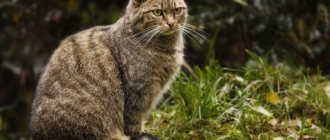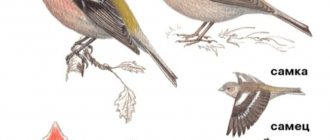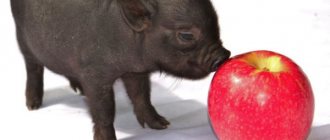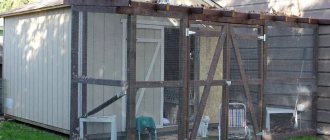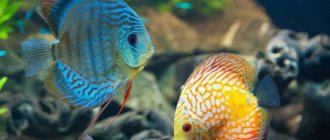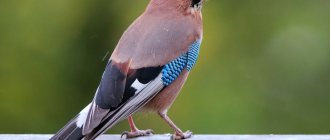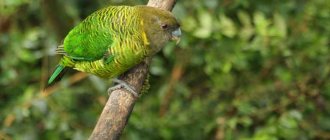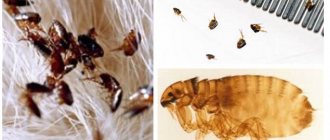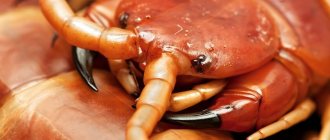Inhabitants of the Mongolian deserts, gerbils are extremely popular among pet lovers around the world. Resembling rats in appearance, these animals are very sociable and friendly. Gerbils are quite miniature - they barely reach ten centimeters in length, but thanks to the tail, which is equal in size to the rodent itself, and sometimes more, it seems that they are not so small. The animal's tail, unlike a rat's, is covered with hair and has a funny tassel at the end. The color of the rodent is determined by its usual habitat: the fur is sand-colored on top, becoming lighter towards the belly area.
Gerbils are unpretentious eaters and can get by with a minimal amount of water, which is typical for extreme desert and semi-desert conditions. The animals are very active, and regardless of the time of day they can stay awake, occasionally interrupting to sleep. Curious rodents very easily make contact with strangers, love to frolic and try to be in sight all the time. It is advisable to have several individuals at once so that they do not get bored.
General information
The gerbil family belongs to the order of rodents. The body size of these animals is 5-20 cm, the tail length is 5-24 cm. The animals can weigh from 10 to 230 g.
Gerbils have an interesting feature: when in danger, they shed their long tail, with a tassel at the end, which does not grow back. The muzzle, like that of a rat, has an elongated, pointed shape. In some members of the family it may be dull. The gerbil's eyes are large, convex, and the ears are well defined. The color of the upper part of the body is brownish and darker than the lower part. The areas behind the ears, around the eyes and on the head are painted in light colors.
Gerbils have well-developed hearing and vision. The hind limbs of the animal are somewhat elongated, which provides it with the ability to move on its hind legs. However, this ability has not reached the level of development that is characteristic of jerboas.
In the wild, gerbils are found in desert steppes and deserts in Africa and Asia. Rodents are herbivorous animals - they feed on terrestrial parts of plants and seeds. In captivity they feed on cereals, vegetables, corn, and fruits (with the exception of citrus fruits).
One way or another, the following advantages speak in favor of keeping gerbils at home:
Mongolian gerbil
- cleanliness of animals;
- unpretentiousness;
- quick adaptation to new conditions, ease of taming;
- lack of aggression.
Among the negative aspects is the possibility of infection with tularemia, which is dangerous for both animals and humans.
On a note. Tularemia is a natural focal infectious disease that affects the lymph nodes, skin, and in rare cases the eyes, pharynx and lungs, accompanied by severe intoxication.
What colors do gerbils come in?
Untamed individuals often have an agouti coloration. But decorative mice have a huge selection of fur colors - more than 48 types of color have been officially discovered. Since the sixties, these animals have gained great popularity. Over time, a certain mutation arose that caused the appearance of different genes. So black, white, and even spotted gerbils appeared.
The animal often has a white belly and paws, which is necessary for proper thermoregulation. The eyes and claws must be black (red eyes are only allowed on a completely white gerbil). Domesticated gerbils were brought to Russia in 2004 and are still popular.
How to choose?
First, you need to resolve the issue of the seller. You can buy a gerbil in a specialized store, online via an advertisement, or from professional breeders. The disadvantage of the first option is that pet stores often sell sick animals that were kept in poor conditions.
It also happens that the parents of animals turn out to be related individuals, which is a factor in the development of hereditary diseases in their offspring. It is also very easy to get scammed on the Internet. It is safest to contact professional breeders. From them you can choose the gerbil you like and get detailed information about the future pet, rules of care and maintenance, as well as information about the behavior characteristics and age of the gerbil.
When buying an animal, first of all, you should pay attention to the appearance of the animal:
- The eyes should have a healthy shine and there should be no mucus discharge on their surface. A sign of internal disease, as well as a weakened immune system, is red discharge from the eyes. Infectious diseases are indicated by purulent discharge, swollen eyelids, and ulcers.
- the ears should be smooth and even. There should be no inflammation or scratched areas in the ears.
- A clean nose without any discharge is a sign of health. Signs of dermatitis or purulent runny nose in a gerbil are worn-out fur on the surface of the nose.
- The fur of a healthy animal is shiny and lies tightly to the body. Dirty, disheveled fur indicates poor care. If there are bald patches and scratches on the fur, it means that the gerbil is suffering from ticks, lice eaters and other parasites.
- tassel at the end is a sign of a healthy gerbil. The fluffier the brush, the younger the animal. If there are scratches or wounds on the tail, the gerbil has been involved in a fight. Wet, dirty, matted fur under the tail indicates the presence of diarrhea or cystitis.
- A healthy animal breathes
- Behavior - healthy gerbils are very active and curious, sick ones sleep a lot, do not respond to stimuli, and are passive.
Clawed gerbil
Mongolian gerbil - what kind of animal is it, and how to keep it?
Gerbils are small, cute rodents that are often kept at home. We’ll tell you in the article how to make their life comfortable.
Clawed or Mongolian gerbils (lat. Meriones unguiculatus) are especially popular as pets.
In nature, the Mongolian gerbil inhabits the semi-deserts, deserts and steppes of Mongolia; in Russia, gerbils live in the Republic of Tyva, in the southern and eastern Transbaikalia. The size of an adult gerbil is up to 20 cm with a tail, weight 75-120 g. They have a pubescent tail with a tassel at the end.
The average lifespan is 3 years.
The natural color of the gerbil is agouti; domestic gerbils have many more colors. Eyes can be either black, red or ruby.
It is better to purchase small animals, about 2 months old, to facilitate taming and habituation. In addition, in nature, gerbils live in family groups - 1 male, 1-3 females with cubs, so the gerbil is much more comfortable if it has a friend. It is best to take brothers or sisters from the same litter to live in a same-sex group. If you take a male and a female, the appearance of offspring is inevitable. The gerbil's pregnancy lasts from 23 to 45 days, the cubs - on average 5-6 pieces - are born small, naked, blind and deaf. The eyes open after two weeks, the mother gerbil feeds the cubs for up to 1.5 months.
When a new gerbil is added to an already formed pair of animals, fights are inevitable, up to and including the death of the newcomer; in nature, they are territorial and do not allow strangers into their territory. If you still need to resettle adult gerbils, you can do this in several ways:
- Neutral territory. The gerbils are placed in a neutral area away from the cage, in a confined space such as a bathtub. You need to prepare a container and thick gloves in advance to break up the fight; in case of aggression, you should never grab the gerbils with your bare hands, despite their size, they bite noticeably and are easily twisted out of your hands. On neutral territory, the roles of the gerbils are determined, and if they do not try to attack each other, sniff each other, even preen their fur, then you can try to move them into the same cage.
- Partition. The main cage of the gerbils is divided in half by a metal partition, strong enough and well reinforced so that the animals cannot break it and reach each other. By sniffing and looking at each other, they get used to the presence of a new individual in the territory, and when they stop showing signs of aggression, the partition can be removed.
If the gerbils continue to behave aggressively, then you can try a second attempt at mounting.
To do this, you will need to put both gerbils in different cages, and put them away from each other (for 2-3 days), and then try to introduce them again. It also happens that gerbils just can’t get along and don’t agree to get along together. In this case, you will have to place each gerbil in a separate cage, or look for one of the gerbils to find a new pair or even a new home.
The cell and its contents
- It is necessary to keep gerbils in a metal cage, preferably with a high tray, and there are options with a container/aquarium on the bottom and a cage on top; they can be kept in a closed display case with good ventilation, in a fairly large “dune” or an aquarium with a mesh on top. Gerbils love to dig, and therefore, for maximum comfort, a large layer of corn or paper filler or large non-coniferous sawdust (10-15 cm) should be poured onto the bottom of the container. To create a cozy nest, animals will not refuse hay, napkins and paper towels without dye. Gerbils and their secretions have practically no smell, and they produce very little moisture, so the filler can be changed not very often, about once every 2 weeks.
- It is convenient to hang the feeder above the sawdust level or on the second floor of the cage, otherwise the animals may try to bury it. Metal and ceramic bowls are most convenient.
- A drinking bowl - ball or nipple - is a must, despite the fact that in nature gerbils practically do not drink water, getting moisture from food. There is no need to place bowls of water; they usually end up upside down and buried.
- The house for gerbils should be of such a volume that living gerbils can easily fit in there, and consist of wood, ceramics, glass or coconut. Ceramic aquarium decorations may also be suitable, without sharp edges and sufficient volume and without holes and elements where the gerbil could get stuck.
- The wheel will help make up for the lack of movement in the not very large space of the cage. The wheel must be at least 20 cm in diameter and solid, preferably made of wood or metal mesh with cells smaller than the gerbil's front paw and larger than its toe. A wheel with crossbars is dangerous for rodents and can lead to broken limbs and tails.
- Entertainment and toys. As toys, you can offer gerbils wooden bridges, large snags or tree roots, twigs, trunk cuts, well-processed and non-coniferous wood, wooden balls and other toys for rodents, cardboard tubes from toilet paper and towels, boxes, tunnels and pressed or wicker baskets, baskets, hay tunnels. Toys, like other objects in the cage, will certainly be chewed, so the toys must be safe for gerbils. In no case should you offer gerbils rags, cotton wool, microfiber and non-woven wipes, soft and plastic toys as toys or instead of napkins.
- Mineral stone. The most convenient for gerbils is a stone screwed to the wall, so it will always be accessible and will not get lost in sawdust. Needed to replenish essential minerals and salts in the gerbil’s body.
- Bathing suit. Gerbils bathe in the sand, like chinchillas, cleaning their fur from dirt and oily secretions. Purchased special bathing suits, glass round vases, bowls, and containers can serve as bathing suits. You can install the bathing suit in a cage in a permanent place, or place it approximately once every 1-2 weeks. It is highly not recommended to wash gerbils in water.
What to feed gerbils?
In nature, gerbils feed on seeds and succulent plants.
In storerooms built in long branched burrows, reserves of seeds are also stored, sometimes reaching 3 kg. per one individual. Domestic gerbils are fed high-quality grain or granular mixtures for gerbils; if there is no special one for gerbils, it can be replaced with food for hamsters, mice, and rats. If the food contains a lot of peanuts and sunflower seeds, it is better to select them and give them a little at a time as a treat.
Additionally, you need to offer your gerbil succulent food with a relatively neutral taste: not very sweet and not sour apples, zucchini, pumpkin, green peas, carrots, cucumber, dandelions, wheatgrass, clover, sprouted seeds of oats, wheat, millet and sunflower. All greens should be collected away from roads and washed well.
Gerbils also need protein in their diet, so it is advisable to include food insects in it - for example, live, defrosted or dried mealworm, zoobass, locusts or crickets, low-fat cottage cheese, egg whites in small quantities, cat food of at least super-premium class.
As treats, gerbils are offered unroasted sunflower seeds, pumpkins, peanuts, hazelnuts, raspberries, peach, raisins, currants, gooseberries, bananas, blueberries, seedless dried fruits (dried without adding sugar or syrups), branches of deciduous and fruit trees (not coniferous). and not stone fruits), dried dandelion root, sometimes biscuits for rodents or white bread crackers without salt and spices, baskets or sticks of pressed grass.
- !
Gerbils should not include in their diet cabbage, legumes, grapes, almonds and pits of plums, apricots, etc., sorrel, any citrus fruits, plums, avocados, parsley, onions, garlic, radishes, ginger, hot peppers, radishes, Jerusalem artichokes, potatoes, sprigs of apricot, cherry, plum, acacia, elderberry, any conifers, buckthorn, laurel, chestnut; food from your table: fatty, fried, salty, smoked, sweets, spicy, pickled, vegetable and animal oils and fats, milk, fresh bread, buns, pasta, cookies, honey, candied fruits, jam, meat, sausage, cheese, ice cream , mushrooms, alcohol, chips, etc.
Communication with gerbils
If the gerbil was adopted as a cub or from a trusted breeder, most likely there will be no problems with behavior and taming; they quickly get used to the new habitat and owner.
If the gerbil is taken from the market or from a pet store, it is possible that it will not be tame, it may break out and bite, you will need to accustom it to yourself, to your hands, and to be trustworthy. The easiest way to get used to your hands is by offering treats from an open palm, but do not make sudden movements, and do not rush to touch the gerbil so as not to scare it. Over time, she will begin to trust you, she will even climb onto your palm, or even higher, onto your shoulder. Gerbils have different characters and temperaments, some are timid and distrustful, others are sociable and brave. And with those who don’t mind chatting, you can play, rolling wooden balls or reels, and search for treats in a maze of boxes and tunnels.
You need to pick up the gerbil carefully, picking it up from below. You can grab the tail only at the base, and immediately put your hands to support the paws. If you take a gerbil by the tip of its tail, it can shed its skin, later the bare tip will dry out and never recover, and the gerbil will lose its cute tuft on its tail.
And, of course, in no case should you punish or frighten the gerbil, splash water at it, push it away, throw it up, scream, or simply blow it - all this will lead to stress and harm to the health of the gerbil.
The gerbil is a very interesting, active animal with many interesting behavioral features. With a well-equipped cage and a friendly attitude, they are quite interesting to watch.
Gerbil cage
Due to the fact that animals love to chew on everything, the bars of the cage should not be made of wood. It is recommended to use a metal cage or a spacious, tightly closed aquarium with good ventilation as a place of residence for the gerbil. The recommended cage size is 40x50 cm.
Build a bedding for housing. The material used is sawdust, hay, paper, as well as a special filler, the thickness of which should be at least 10-15 cm. A thick layer of bedding will allow the animal to dig one or more holes - this activity represents a significant part of their leisure time.
To make your pet's living conditions comfortable, the enclosure should be equipped with a running wheel, walking balls and other entertainment. Thanks to this, the gerbil will not get bored in your absence. In addition, an active lifestyle, even within such a small space, will be very beneficial for the health and well-being of your pet.
Since the animal constantly feels the need to chew something, do not forget to put some branches in the house.
Provide your pet with a sand bath. The animal will regularly clean its skin in it.
Housing for gerbils
A cage of 30/60/30 cm is suitable for a pair of gerbils, but this is the minimum size; it is better to purchase larger housing. Regular aquariums are also suitable, in which it is easier to add a deep layer of bedding, since gerbils like to burrow, which is natural for domestic gerbils.
Which rodent has a tail longer than its body? Why does a rabbit itch?
The answer is at the end of the article
